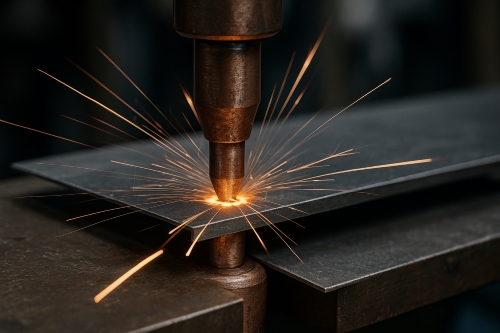Common Types Of Beryllium Copper
Beryllium copper (BeCu) is a high-performance alloy known for its combination of strength, electrical conductivity and corrosion resistance. It is used in various industries, including aerospace, electronics and manufacturing. The following provides details on the properties, classification, applications and production of beryllium copper alloys.
Properties of Beryllium Copper Alloys
Beryllium copper alloys are recognised for their high strength, efficient conductivity and resistance to wear and corrosion. They normally contain 0.5 to 3% beryllium, with the remainder being copper.
- High strength and hardness: BeCu can be precipitation hardened to achieve tensile strengths of up to 200 000 psi, while retaining its non-magnetic properties.
- Good electrical and thermal conductivity: Although its conductivity is lower than pure copper, it offers a balance between electrical performance and mechanical strength, making it suitable for electrical connectors.
- Corrosion and fatigue resistance: The alloy withstands environmental influences and is used in marine and aerospace applications.
- Spark-resistant and non-magnetic properties: These characteristics allow BeCu to be used in explosive or sensitive electronic environments.
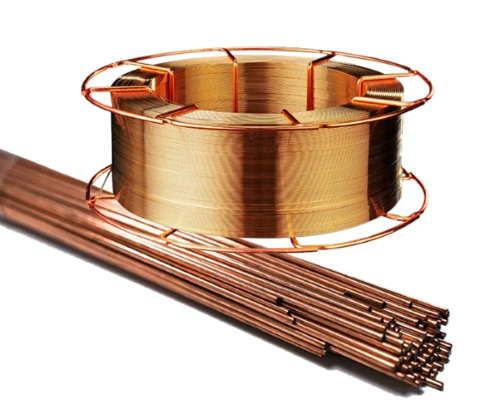
Classification of Beryllium Copper Alloys
Beryllium copper (BeCu) is a copper alloy with a small proportion of beryllium, typically between 0.4 and 2%. The following describes the main types and their specific applications:
1. C17200 (High-strength Beryllium Copper)
This type is the most widely used beryllium copper alloy. C17200 contains about 1.8% beryllium and achieves tensile strengths of up to 200 000 psi while demonstrating good fatigue resistance. It is used in applications requiring high strength and wear resistance, such as aerospace components, electrical connectors and precision moulds.
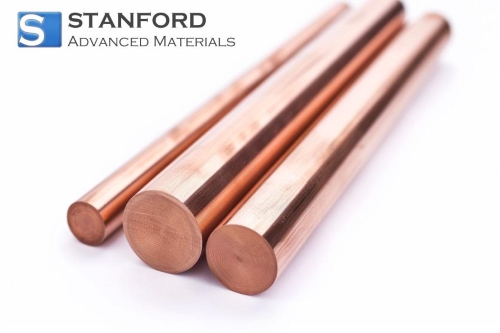
2. C17000 (Medium-strength Beryllium Copper)
C17000 is a beryllium copper alloy with lower strength and a beryllium content of approximately 1.5%. It provides a balance between strength, conductivity and ease of processing. It is not as strong as C17200 but offers improved corrosion resistance and is easier to manufacture. It is used for electrical connections and clamps, springs and flexible connectors as well as heat exchangers.
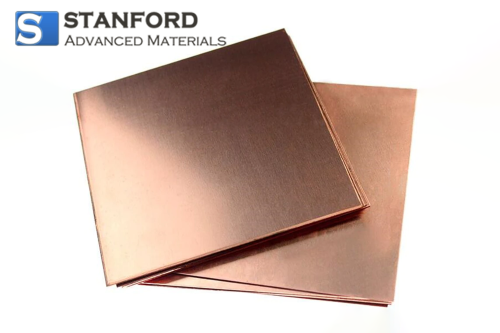
3. C17500 (Age-hardened Beryllium Copper)
C17500 is another high-strength alloy that is subjected to an ageing process to increase its strength. It contains about 2% beryllium. The heat-treatment increases its hardness and electrical conductivity. It is used for telecommunications connectors, aerospace components, high-performance switches and relays.
4. C15600 (Beryllium Copper for Spark-free Applications)
C15600 is designed for environments where spark generation poses a risk. This alloy has slightly lower strength than C17200 and C17500 but offers improved performance in spark-free conditions. It is used in tools and equipment for mining, electrical devices in hazardous environments and spark-free hand tools.
5. C51900 (Beryllium Copper with High Conductivity)
C51900 is a beryllium copper alloy with a higher copper content. It is intended for applications that require high electrical conductivity. It is softer and more formable than the high-strength varieties while providing a balance between electrical performance and mechanical properties.
Summary Table: Common Types of Beryllium Copper Alloys
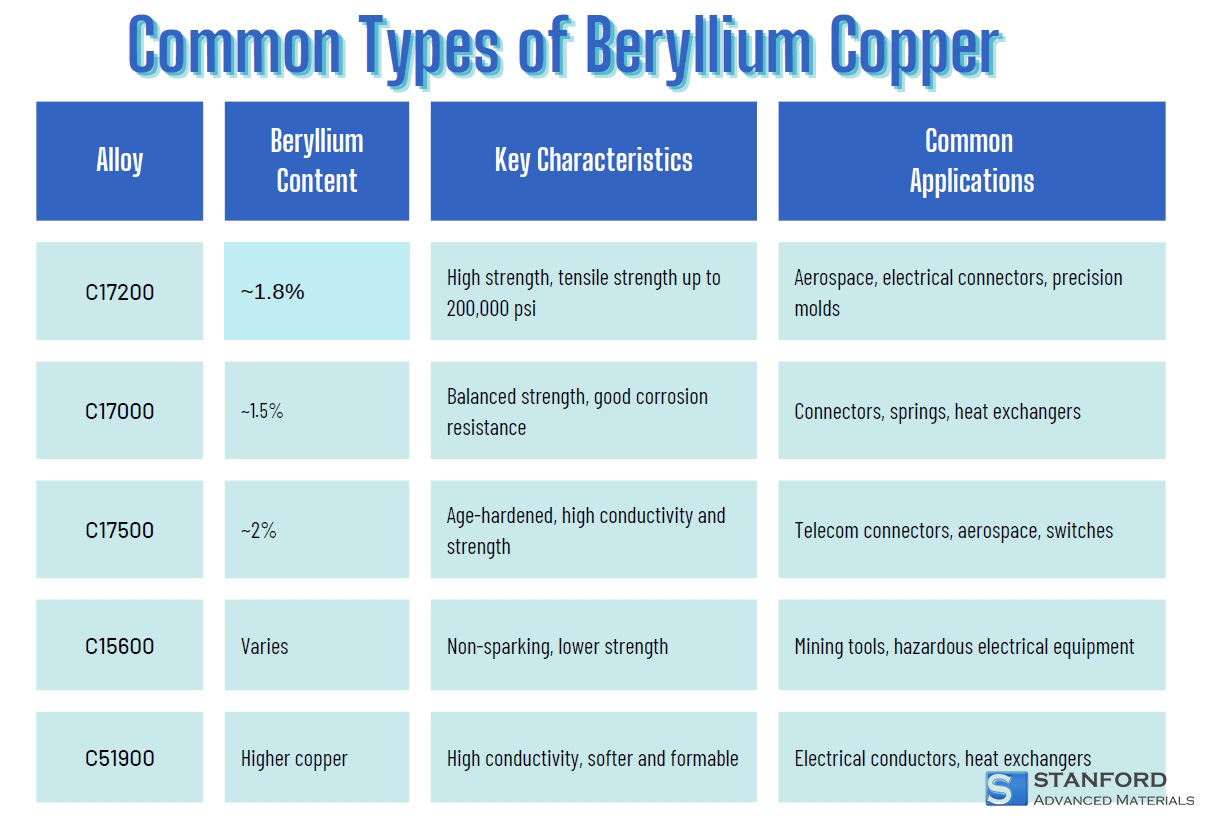
Applications of Beryllium Copper Alloys
Owing to its defined properties, beryllium copper is used in several industries:
- Electronics and Electrical Industry: Its combination of conductivity and strength is used in connectors, switches and relay components.
- Aerospace and Defence: It is used in aircraft fittings, bushings and structural components given its fatigue resistance and low weight.
- Oil and Gas Industry: Non-sparking tools made from BeCu are employed in hazardous environments to reduce the risk of ignition.
- Automotive Industry: Its longevity and corrosion resistance make it suitable for sensors, connectors and anti-lock braking system components.
- Medical Devices: Its non-magnetic properties are used in MRI-compatible tools and precision instruments.
Manufacturing of Beryllium Copper Alloys
The manufacture of beryllium copper involves several key processes:
- Melting and Casting: Copper and beryllium are melted in a controlled environment to prevent oxidation. The alloy is cast into billets or blooms.
- Hot and Cold Working: The cast material is rolled, extruded or forged to achieve the desired shape and mechanical properties.
- Solution Heat Treatment: The alloy is heated to dissolve the beryllium in the copper matrix and to ensure even distribution.
- Precipitation Hardening (Ageing Process): The material is heat-treated to increase its strength and hardness.
- Final Processing: The finished alloy is machined, formed and coated as the application requires.
Conclusion
Whether high strength, efficient conductivity or corrosion and spark resistance is required, beryllium copper offers solutions for a wide range of demanding applications across various industries. Advances in technology and manufacturing processes ensure that beryllium copper remains important in modern applications. Further details and technical support are available from Stanford Advanced Materials (SAM).

 Bars
Bars
 Beads & Spheres
Beads & Spheres
 Bolts & Nuts
Bolts & Nuts
 Crucibles
Crucibles
 Discs
Discs
 Fibers & Fabrics
Fibers & Fabrics
 Films
Films
 Flake
Flake
 Foams
Foams
 Foil
Foil
 Granules
Granules
 Honeycombs
Honeycombs
 Ink
Ink
 Laminate
Laminate
 Lumps
Lumps
 Meshes
Meshes
 Metallised Film
Metallised Film
 Plate
Plate
 Powders
Powders
 Rod
Rod
 Sheets
Sheets
 Single Crystals
Single Crystals
 Sputtering Target
Sputtering Target
 Tubes
Tubes
 Washer
Washer
 Wires
Wires
 Converters & Calculators
Converters & Calculators
 Write for Us
Write for Us
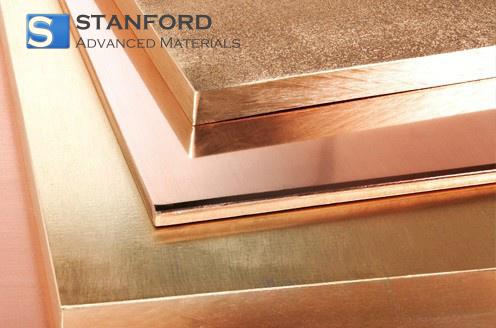
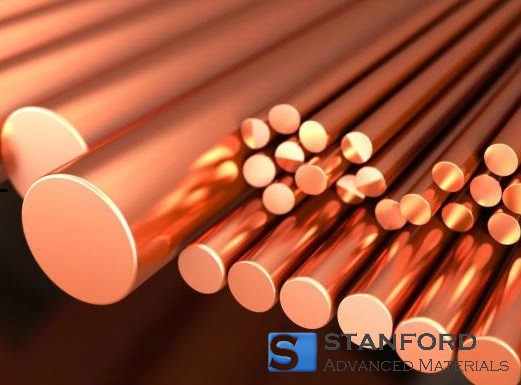
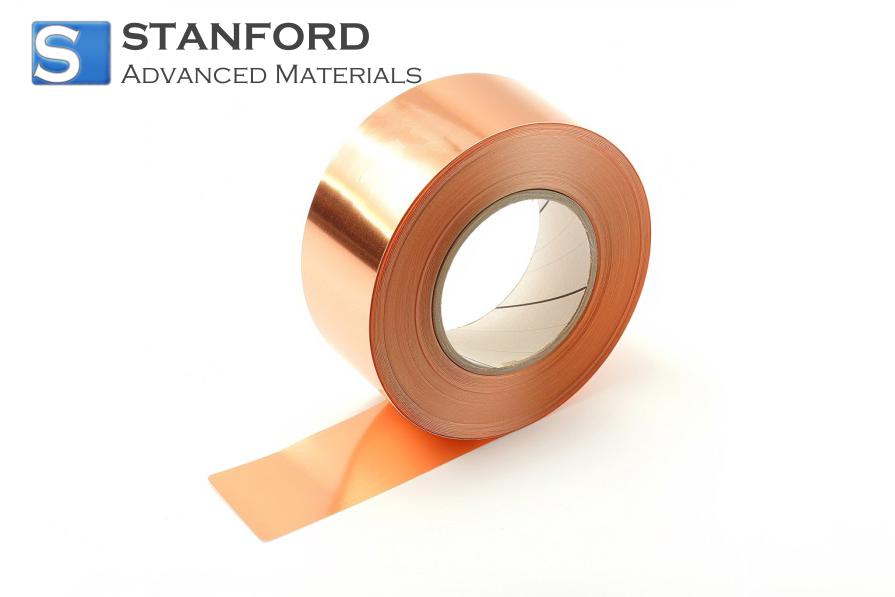
 Chin Trento
Chin Trento



